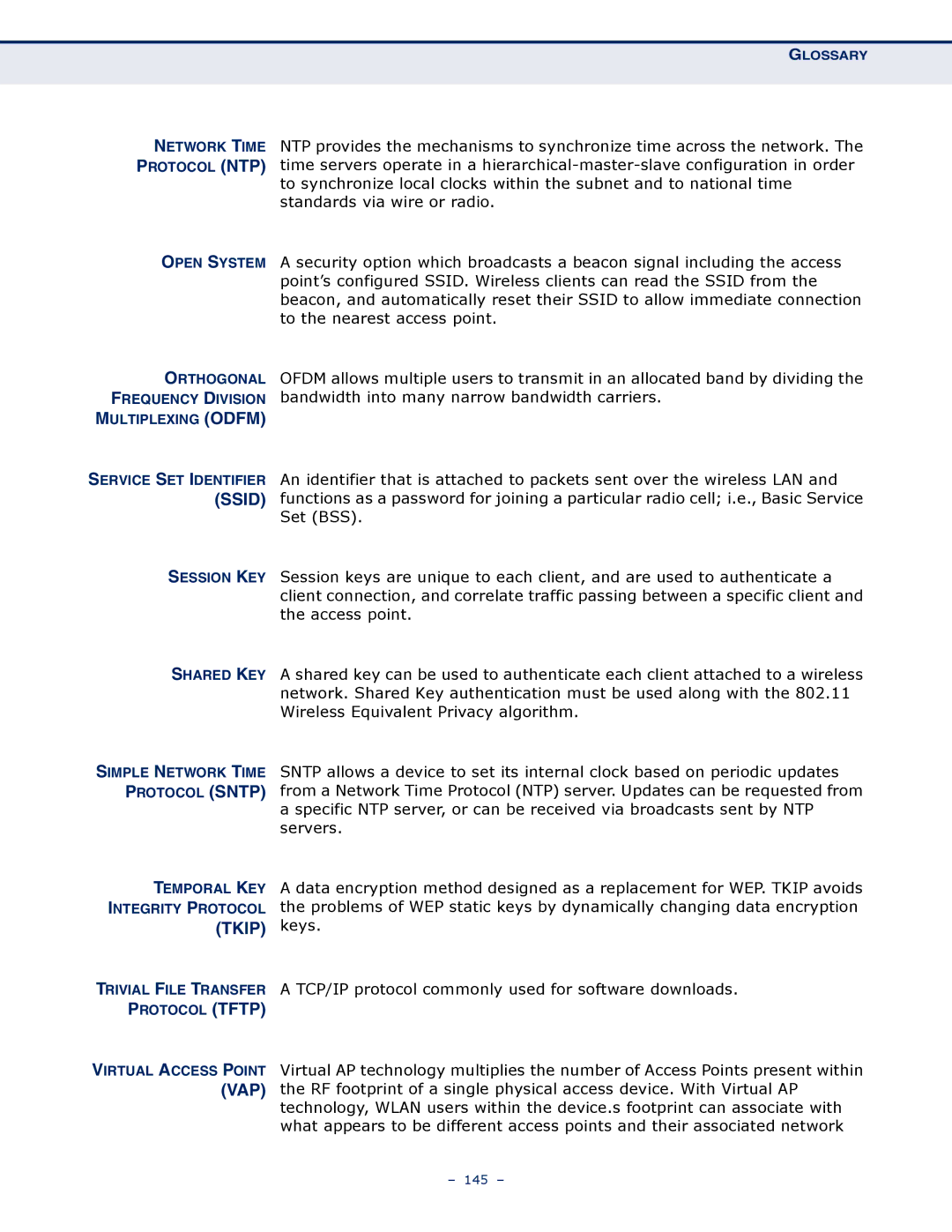GLOSSARY
NETWORK TIME
PROTOCOL (NTP)
OPEN SYSTEM
ORTHOGONAL
FREQUENCY DIVISION
MULTIPLEXING (ODFM)
SERVICE SET IDENTIFIER
(SSID)
SESSION KEY
SHARED KEY
SIMPLE NETWORK TIME
PROTOCOL (SNTP)
TEMPORAL KEY INTEGRITY PROTOCOL
(TKIP)
TRIVIAL FILE TRANSFER
PROTOCOL (TFTP)
VIRTUAL ACCESS POINT
(VAP)
NTP provides the mechanisms to synchronize time across the network. The time servers operate in a
A security option which broadcasts a beacon signal including the access point’s configured SSID. Wireless clients can read the SSID from the beacon, and automatically reset their SSID to allow immediate connection to the nearest access point.
OFDM allows multiple users to transmit in an allocated band by dividing the bandwidth into many narrow bandwidth carriers.
An identifier that is attached to packets sent over the wireless LAN and functions as a password for joining a particular radio cell; i.e., Basic Service Set (BSS).
Session keys are unique to each client, and are used to authenticate a client connection, and correlate traffic passing between a specific client and the access point.
A shared key can be used to authenticate each client attached to a wireless network. Shared Key authentication must be used along with the 802.11 Wireless Equivalent Privacy algorithm.
SNTP allows a device to set its internal clock based on periodic updates from a Network Time Protocol (NTP) server. Updates can be requested from a specific NTP server, or can be received via broadcasts sent by NTP servers.
A data encryption method designed as a replacement for WEP. TKIP avoids the problems of WEP static keys by dynamically changing data encryption keys.
A TCP/IP protocol commonly used for software downloads.
Virtual AP technology multiplies the number of Access Points present within the RF footprint of a single physical access device. With Virtual AP technology, WLAN users within the device.s footprint can associate with what appears to be different access points and their associated network
– 145 –
